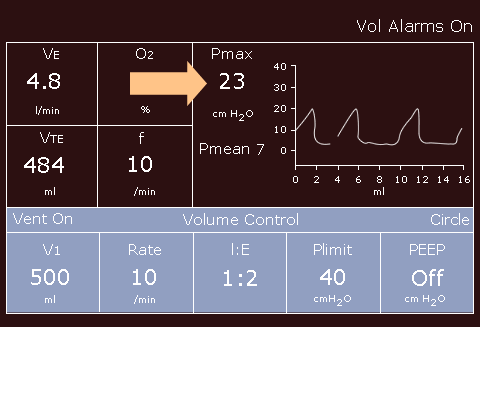Assessing IPPV
Satisfactory ventilation is assessed by:
- Watching the bellows fill
- The CO2 trace
- The rise and fall of the patient’s chest
- The measured expired tidal volume
- An appropriate inflation pressure



Satisfactory ventilation is assessed by:
- Watching the bellows fill
- The CO2 trace
- The rise and fall of the patient’s chest
- The measured expired tidal volume
- An appropriate inflation pressure
Pmax is the peak airway pressure and Pmean is the mean airway pressure.
A sudden rise of pressures during volume control indicates an increase in resistance or a fall in compliance. This is most commonly due to inadequate muscle relaxation, but may indicate a problem with the circuit or TT.
This sign is not seen during pressure control ventilation. In this case, a fall in inspiratory tidal volume will be seen instead.

Satisfactory ventilation is assessed by:
- Watching the bellows fill
- The CO2 trace
- The rise and fall of the patient’s chest
- The measured expired tidal volume
- An appropriate inflation pressure
Pmax is the peak airway pressure and Pmean is the mean airway pressure.
A sudden rise of pressures during volume control indicates an increase in resistance or a fall in compliance. This is most commonly due to inadequate muscle relaxation, but may indicate a problem with the circuit or TT.
This sign is not seen during pressure control ventilation. In this case, a fall in inspiratory tidal volume will be seen instead.
